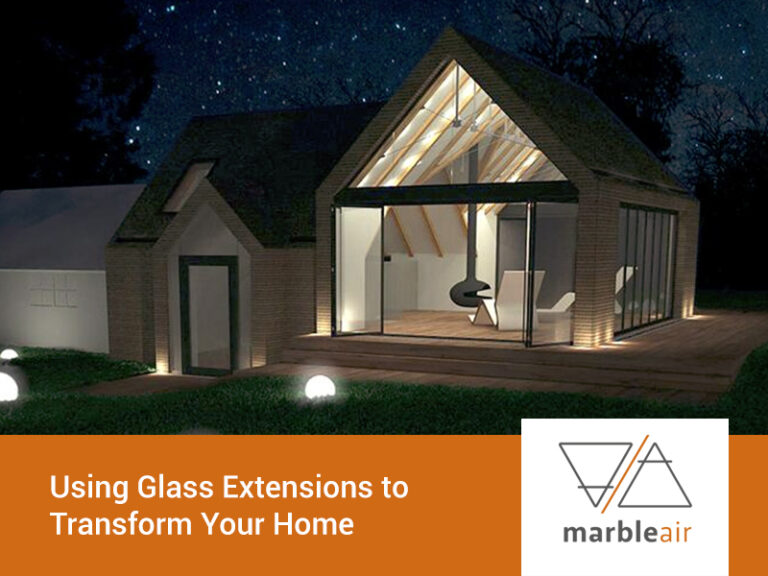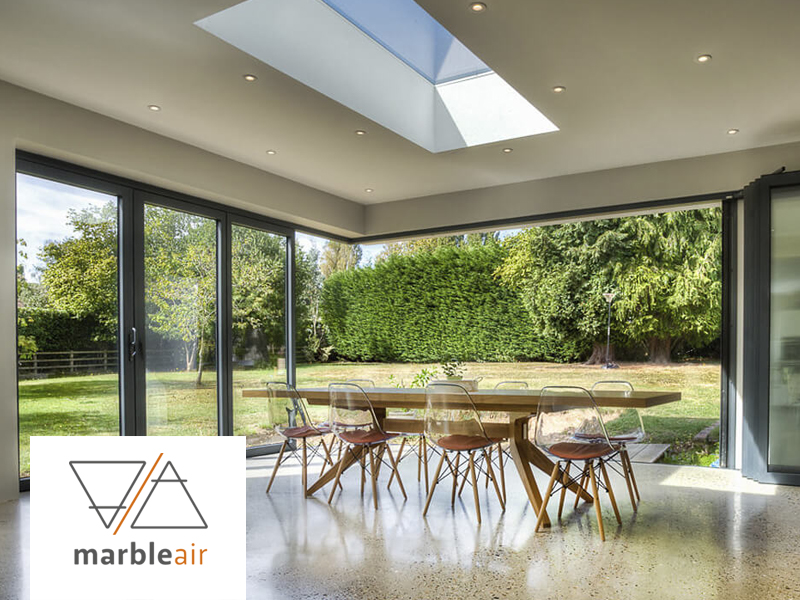
Using Glass Extensions to Transform Your Home
The homes in the UK are, for the most part, designed uniformly, lacking character, restricting levels of natural light and with cramped spaces built for maximum profit. But what if you want a little more living space, or perhaps want a brighter and more open home? This is when glass extensions come into their own and are well worth exploring.

What are the Benefits of Glass Extensions?
Glass extensions, or conservatories, are a popular choice for several great reasons.
- They have a uniquely beautiful way of opening up a space and letting natural light and warmth flood in.
- Designed and installed correctly, glass extensions can reduce your heating bills and make for a very cosy space in winter.
- A glass extension will be an immediate ‘wow’ factor to any home, no matter the style or age, adding value and desirability.
- These spaces can function in a variety of roles, from dining room to kitchen to kiddie’s playroom.
- The sheets of glass offer uninterrupted garden views which remove visual boundaries and makes our natural environment more accessible to us.
- There are so many options and designs to choose from, each of which can be tailored to the size and shape you need.
- These are also a perfect solution to seamlessly join or divide the two sections of a building.
- Glass extensions are a practical choice because they can be used in any weather for all year-round experience of the outdoors.
A fresh and warming space with spectacular views? This sounds wonderful, of course, but what factors should be considered before diving right in?
Glass Extensions – What do I need to know?
Various considerations come into play when designing a glass extension.
Your architect will be able to guide you on key points such as:
- Will the planned extension work be considering the age and function of the property?
- Which direction will your glass extension face? For example, north-facing conservatories are cooler in summer, but can be cold in winter.
- What would be the best flooring solution?
- Considering the outlook, what design would work best, i.e., full glass or half glass, framed or unframed?
- What sort of insulation will be required?
- How will it be furnished, given that electric sockets and heating (UFH) will need to be set into the floor?
There are still some questions to be answered.
Do I Need Planning Permission?
Adding a glass extension to a house falls within the same set of planning rules as any other home extension. However, permitted development rights do allow you to extend your home without the requirement for planning permission, although this is dependent on certain conditions, and you are welcome to chat with MarbleAir for further details.
Design and Construction of Glass Extensions
A conversation with your architect is the starting point where you will be able to define the function of the extension and form essential ideas on the design that best suit your space.
Whilst the concept, technical design and statutory permissions are handled by the architect, the construction will be left in the hands of a qualified specialist contractor who will advance the detailed design of glass structure, manufacture and install it in place.
Ancillary works can be handled by a general building contractor.
Choosing the glazing
The type of glass you choose is critical in the design of your glass extension
Choosing the cheapest option may render your space uninhabitable in winter or baking hot in summer and adversely affect your heating bills. The trick is to find the balance between the best glazing options that you can afford, the added value to your home, and the cost of heating or cooling over its lifetime.
A comprehensive list of glazing options can be found here, but some of the basic choices are:
- Laminated glass is safe and has excellent insulation properties.
- Heat-reflective glass (energy efficient glass) has a metallic coating which allows the sun’s heat through and keeps it in, creating a deliciously warm space.
- Self-cleaning glass which is manufactured with a thin photocatalytic film slowly breaks down dirt and grime using the sun’s rays and the occasional shower to keep the glass cleaner for longer.
- Frosted, patterned or etched glass can offer a level of privacy if you are overlooked by neighbours, but still offers light and warmth.
- Heated glass being a type of treated glass to which a transparent electrically conductive coating has been applied. The electric current passes through cables on this coating, generating heat and causing the glass to begin radiating heat. Isn’t this extraordinary?
Glass Extensions for Listed Buildings
Any additions or changes to a listed building will need to be carried out with care and consideration for the age and historical value of the structure.
We have found that it is sometimes easier to introduce an extension which is completely different in style and character to the heritage asset. This design strategy makes glass great material to design in maintaining integrity and visibility of the original structure.
Extension Ideas
Glass extensions are incredibly exciting projects to work on because, very often challenging, structural glass is a versatile and unsurpassed construction material to work with. And there are numerous design precedents to get those creative juices flowing, from minimalist boxes to frameless portals.
The light and energy created by the barely visible sheet of glass can transform your home into the ‘wow’ property you had always dreamed of.
Please contact Anna and her team who will work with you to create something truly magical for you.
